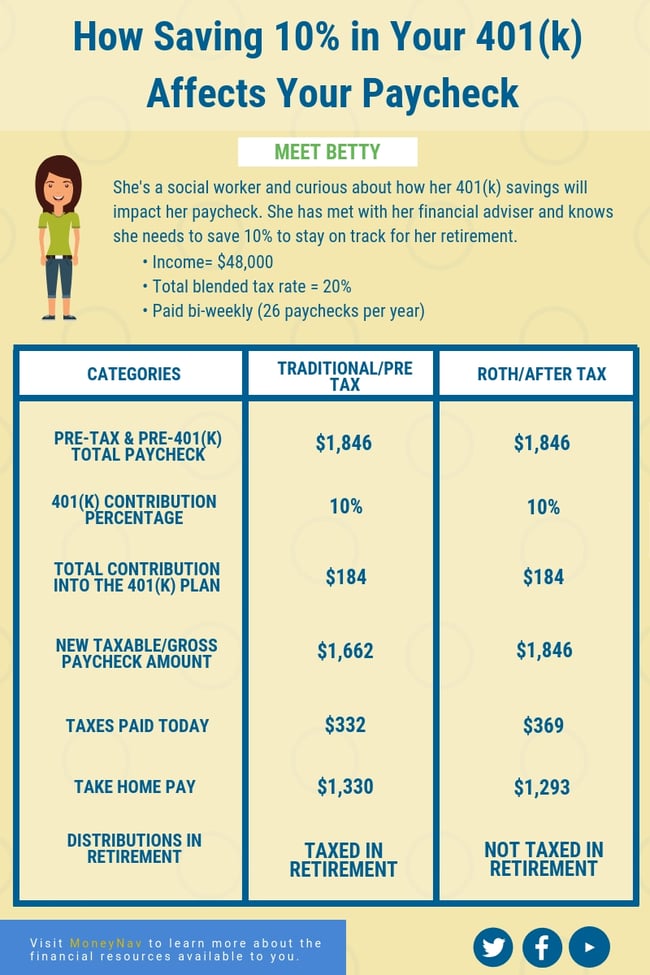Latest Posts
Your money should work for you.
Get the latest tips on how to plan for retirement and make better financial decisions.
Don't worry... we will NOT spam you!
The use of an employer-sponsored retirement savings account (i.e. 401(k) or 403(b)) is a powerful tool in ensuring you’re saving enough and in the best way for your retirement. Depending on the plan offered by your employer, you could save in a traditional 401(k), Roth 401(k), or respective 403(b) accounts. In the infographic below, we’d like you to meet Betty. She’s thinking about how and where she should save in her organization's 401(k) retirement plan. You can see the impact her retirement savings decision- either pre-tax or Roth has on her immediate paycheck as well as her retirement goals.
When saving in a Traditional/Pre Tax:
How does it work?
Your contribution will be withheld from your paycheck and deposited into your 401(k) account before taxes are applied, thereby reducing your taxable income today. You receive this tax deduction upfront along with tax-deferred growth of your account. However, you will pay taxes on your contributions and earnings when you begin withdrawing from your account in retirement.
What are the benefits?
- Reduced taxable income today
This may be a good fit for investors:
- In a higher tax bracket today
- Expecting to be in a lower tax bracket in retirement
- Who are not a little behind in their retirement savings and need to save as much as possible today
When Saving in a Roth/After Tax:
How does it work?
Your paycheck will have taxes withheld first and then your contribution is deposited into your 401(k) account. Your contributions will grow tax-free and you will not be taxed when you begin withdrawing money from your account in retirement, assuming you meet certain rules.
What are the benefits?
- Tax-free growth account
- Qualifying distributions are tax-free
This may be a good fit for investors:
- Who expect for their income and tax liability to increase over time
- Currently, pay low/no income tax
- Who are younger and will benefit from a longer time horizon of tax-deferred and tax-free growth
- Wishing to avoid Required Minimum Distributions (RMDs) at age 70 ½
- Who are ahead of track for their retirement income needs and will not need to distribute all assets at retirement
- Who can satisfy the 5-year holding period rule before needing access to their funds
We’d also encourage you to read other resources on MoneyNav to learn more about how retirement savings can influence your future savings.



